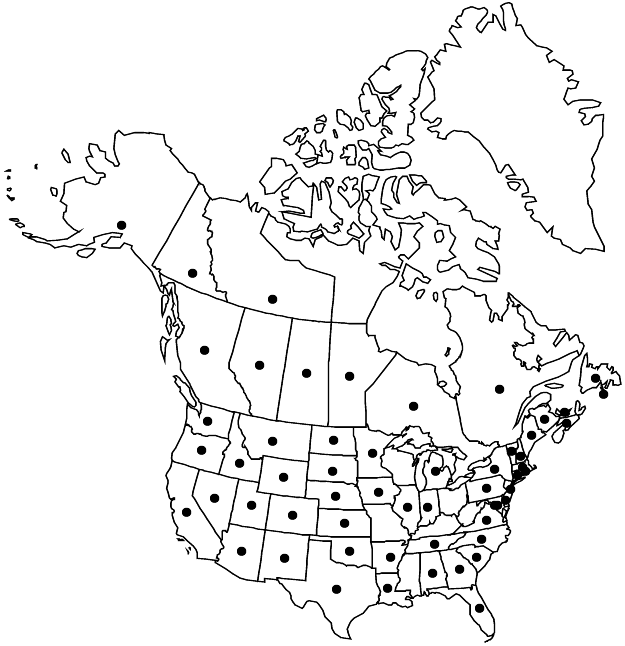Polygonum aviculare subsp. aviculare
Plants green, heterophyllous (often lacking larger proximal stem-leaves at maturity). Stems 1–3, ascending or erect, sometimes decumbent, basal branches divaricate, (10–) 25–75 (–100) cm. Leaves: ocrea (5.5–) 6–10 (–14) mm, proximal part cylindric, distal part silvery, hyaline, soon lacerate and disintegrating into fibers; petiole 1–6 (–8) mm; blade green, lateral-veins visible but not raised abaxially, elliptic to oblanceolate, 18–50 (–60) × (6–) 10–20 mm, 2–4.5 times as long as wide, apex acute or obtuse; stem-leaves 1.4–4 times as long as branch leaves. Cymes aggregated at tips of stems and branches, 3–8-flowered. Pedicels mostly exserted from ocreae, 2–5 mm. Flowers: perianth (2.3–) 2.8–4.7 (–5) mm, 1.8–2.8 times as long as wide; tube (15–) 20–37% of perianth length; tepals overlapping, green with pink, red, or white margins, oblong, flat (cucullate in fruit), outer tepals not pouched at base; veins branched, thickened; stamens 7–8. Achenes enclosed in or barely exserted from perianth, brown to dark-brown, ovate, 3-gonous, (2.1–) 2.7–3.7 mm, faces subequal, concave, apex straight, striate-tubercled; late-season achenes uncommon, 3.5–5 mm. 2n = 40, 60.
Phenology: Flowering May–Oct.
Habitat: Fields, uncultivated areas, waste places, roadsides
Elevation: 0-3500 m
Distribution

Introduced; St. Pierre and Miquelon, Alta., B.C., Man., N.B., Nfld. and Labr. (Nfld.), N.W.T., N.S., Ont., P.E.I., Que., Sask., Yukon, Ala., Alaska, Ariz., Ark., Calif., Colo., Conn., Del., D.C., Fla., Ga., Idaho, Ill., Ind., Iowa, Kans., La., Maine, Md., Mass., Mich., Minn., Mont., Nebr., Nev., N.H., N.J., N.Mex., N.Y., N.C., N.Dak., Okla., Oreg., Pa., R.I., S.C., S.Dak., Tenn., Tex., Utah, Vt., Va., Wash., Wyo., Eurasia
Discussion
Selected References
None.
Lower Taxa
"/2" is not declared as a valid unit of measurement for this property.
